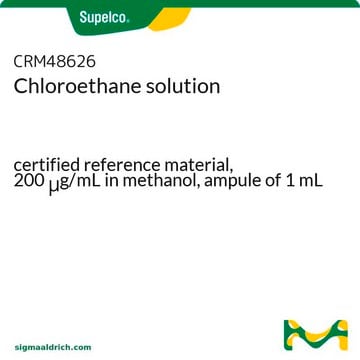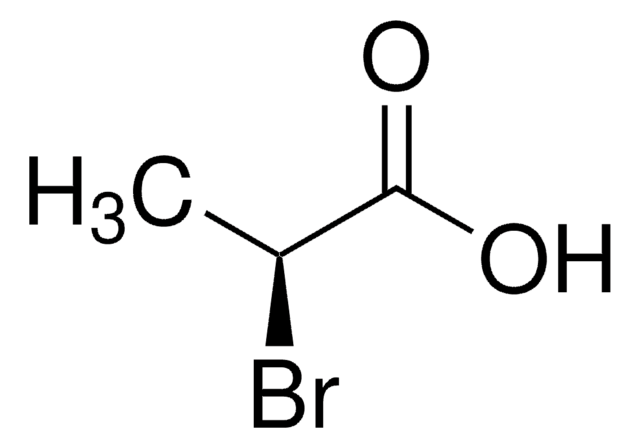모든 사진(1)
About This Item
Linear Formula:
CH3CHClCOOCH3
CAS Number:
Molecular Weight:
122.55
Beilstein:
1421535
EC Number:
MDL number:
UNSPSC 코드:
12352100
PubChem Substance ID:
추천 제품
vapor density
4.22 (vs air)
vapor pressure
5.25 mmHg ( 20 °C)
분석
97%
expl. lim.
19 %
refractive index
n20/D 1.417 (lit.)
bp
132-133 °C (lit.)
density
1.075 g/mL at 25 °C (lit.)
SMILES string
COC(=O)C(C)Cl
InChI
1S/C4H7ClO2/c1-3(5)4(6)7-2/h3H,1-2H3
InChI key
JLEJCNOTNLZCHQ-UHFFFAOYSA-N
유사한 제품을 찾으십니까? 방문 제품 비교 안내
일반 설명
Methyl 2-chloropropionate is the initiating/catalyst system during the atom transfer radical polymerization of N,N-dimethylacrylamide, N-isopropylacrylamide and N-vinylpyrrolidone.
애플리케이션
Methyl 2-chloropropionate was used as initiator during the synthesis of acrylamide homopolymers and acrylamide-N-isopropylacrylamide block copolymers.
신호어
Warning
유해 및 위험 성명서
예방조치 성명서
Hazard Classifications
Eye Irrit. 2 - Flam. Liq. 3 - Skin Irrit. 2 - STOT SE 3
표적 기관
Respiratory system
Storage Class Code
3 - Flammable liquids
WGK
WGK 1
Flash Point (°F)
100.4 °F - closed cup
Flash Point (°C)
38 °C - closed cup
개인 보호 장비
Eyeshields, Faceshields, Gloves, type ABEK (EN14387) respirator filter
이미 열람한 고객
Acrylamide Homopolymers and Acrylamide-N-Isopropylacrylamide Block Copolymers by Atomic Transfer Radical Polymerization in Water.
Wever DAZ, et al.
Macromolecules, 45(10), 4040-4045 (2012)
Thermal response of narrow-disperse poly (N-isopropylacrylamide) prepared by atom transfer radical polymerization.
Xia Y, et al.
Macromolecules, 38(14), 5937-5943 (2005)
Controllable synthesis of poly (N-vinylpyrrolidone) and its block copolymers by atom transfer radical polymerization.
Lu X, et al.
Polymer, 48(10), 2835-2842 (2007)
Copolymerization of N, N-dimethylacrylamide with n-butyl acrylate via atom transfer radical polymerization.
Neugebauer D and Matyjaszewski K.
Macromolecules, 36(8), 2598-2603 (2003)
J L Rakels et al.
Enzyme and microbial technology, 15(12), 1051-1056 (1993-12-01)
The enantiomeric ratio (E) is commonly used to characterize the enantioselectivity in enzyme-catalyzed kinetic resolution. In this paper this parameter is directly derived from the enantiomeric excess of substrate and product. This is formally more correct than using Chen's equation
자사의 과학자팀은 생명 과학, 재료 과학, 화학 합성, 크로마토그래피, 분석 및 기타 많은 영역을 포함한 모든 과학 분야에 경험이 있습니다..
고객지원팀으로 연락바랍니다.












![Tris[2-(dimethylamino)ethyl]amine 97%](/deepweb/assets/sigmaaldrich/product/structures/695/792/ee0ff167-22a3-43a7-83a1-6c4908adf0ae/640/ee0ff167-22a3-43a7-83a1-6c4908adf0ae.png)